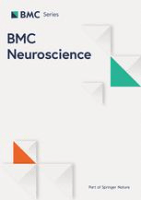
Brain Communications
Scope & Guideline
Fostering Knowledge in Neuroscience and Psychiatry
Introduction
Aims and Scopes
- Neuroimaging and Biomarkers:
The journal emphasizes the use of neuroimaging techniques (e.g., MRI, PET, EEG) to explore brain structure and function, as well as to identify biomarkers for various neurological disorders. - Cognitive and Behavioral Neuroscience:
Research addressing cognitive processes, neuropsychological assessments, and behavioral implications of brain disorders, including their impacts on daily functioning and quality of life. - Neurodegenerative Diseases:
A significant focus on understanding the pathophysiology, progression, and potential treatments for neurodegenerative diseases such as Alzheimer's, Parkinson's, and amyotrophic lateral sclerosis. - Neuroinflammation and Immune Response:
Investigating the role of neuroinflammation and the immune system in brain diseases, including the implications for therapy and disease management. - Translational Research and Clinical Applications:
The journal aims to bridge basic neuroscience research and clinical practice, promoting studies that translate findings into therapeutic strategies for patients. - Developmental and Pediatric Neuroscience:
Research focusing on brain development, particularly in pediatric populations, addressing conditions like autism, epilepsy, and cognitive impairments that arise in early life. - Computational and Machine Learning Approaches:
The application of advanced computational techniques and machine learning models to analyze complex neurobiological data, aiming to enhance predictive capabilities in clinical settings.
Trending and Emerging
- Neuroplasticity and Rehabilitation:
Research exploring neuroplasticity mechanisms and the efficacy of rehabilitation strategies for recovery after neurological injuries or diseases is on the rise, emphasizing the brain's ability to adapt. - Biomarkers for Early Diagnosis:
There is a growing emphasis on identifying and validating biomarkers for the early diagnosis of neurodegenerative diseases, which is critical for timely intervention and treatment. - Integrative Omics Approaches:
The use of integrative omics (genomics, proteomics, metabolomics) to understand complex brain disorders is gaining momentum, providing a holistic view of disease mechanisms. - Psychiatric Comorbidities in Neurological Disorders:
Research investigating the intersection of neurological disorders with psychiatric conditions is increasing, highlighting the need for comprehensive treatment approaches. - Digital Health and Telemedicine:
The rise of digital health technologies and telemedicine in managing neurological conditions is becoming a significant area of interest, particularly following the COVID-19 pandemic. - Artificial Intelligence in Neuroscience:
The application of artificial intelligence and machine learning techniques for data analysis, diagnostic purposes, and personalized medicine approaches in neuroscience is rapidly expanding. - Neuroinflammation as a Therapeutic Target:
Emerging evidence suggests that neuroinflammation plays a crucial role in various brain disorders, leading to increased research on targeting inflammatory pathways for therapeutic interventions.
Declining or Waning
- Traditional Pharmacological Interventions:
Research focusing solely on traditional pharmacological treatments for neurological disorders is becoming less prominent, as there is a shift towards exploring multimodal and integrative approaches to treatment. - Basic Animal Models:
Studies heavily reliant on basic animal models without translational relevance are declining, as the focus shifts to more complex models that better mimic human pathophysiology. - Single-Domain Neuropsychological Assessments:
There is a noticeable decrease in studies that utilize single-domain assessments of cognitive function, with an increasing preference for comprehensive, multidimensional evaluations. - Epidemiological Studies Without Mechanistic Insights:
While epidemiological research remains important, studies that fail to provide mechanistic insights into the relationship between risk factors and neurological outcomes are less frequently published. - Historical Perspectives and Reviews:
The publication of historical reviews and perspectives on neuroscience is declining in favor of original research articles that present new data and findings.
Similar Journals

Brain Imaging and Behavior
Illuminating Connections: Unraveling Brain and BehaviorBrain Imaging and Behavior is a premier journal published by SPRINGER, dedicated to advancing the understanding of the relationship between brain function and behavior through innovative imaging techniques. Since its inception in 2007, the journal has provided a crucial platform for researchers and professionals in fields such as Behavioral Neuroscience, Cognitive Neuroscience, and Psychiatry and Mental Health. With an impressive ranking within the Q1 category in Radiology, Nuclear Medicine and Imaging and maintaining strong Q2 status in several other categories, the journal is positioned as a leading resource for groundbreaking research. The journal aims to disseminate high-quality studies that explore neurobiological underpinnings of behavior, utilizing cutting-edge imaging technologies. Although it is not an open-access journal, the visibility and impact of published works in Brain Imaging and Behavior continue to influence the scientific community significantly, underscoring the critical intersection between imaging science and neuroscience.

NeuroImage-Clinical
Transforming Clinical Practice through Cutting-edge ResearchNeuroImage-Clinical is a premier open access journal published by Elsevier Science Ltd, dedicated to advancing the field of clinical neuroimaging and its applications in a variety of neurological disorders. With an ISSN of 2213-1582, this journal has established itself as a leading source of innovative research since its inception in 2012, now continuing through 2024. Recognized for its high impact, it occupies the top quartile (Q1) in prestigious categories such as Cognitive Neuroscience, Neurology, and Radiology, affirming its relevance in clinical and research settings. Its Scopus rankings further exemplify its significant contribution to the disciplines of Radiology and Neurology, consistently placing it among the top tiers of journals in these fields. This journal not only provides critical insights for researchers and professionals but also serves as a valuable resource for students, fostering an understanding of the complexities in neuroimaging techniques and their implications for patient care. With open access options ensuring broad dissemination of knowledge, NeuroImage-Clinical plays a pivotal role in enhancing collaboration and innovation within the global neuroscience community.

NEUROPSYCHOLOGY REVIEW
Pioneering Research at the Forefront of Cognitive ScienceNEUROPSYCHOLOGY REVIEW is a prestigious journal published by Springer, dedicated to the exploration of cognitive processes and behavior through neurological and psychological perspectives. With its ISSN 1040-7308 and E-ISSN 1573-6660, this journal holds a distinguished position in Q1 of the Neuropsychology and Physiological Psychology category, ranking at #3 out of 76 with an impressive 96th percentile in Scopus. Since its inception in 1990, it has provided a critical platform for researchers, professionals, and students to disseminate and engage with comprehensive reviews and empirical research, promoting a deeper understanding of the interplay between neural mechanisms and psychological phenomena. Aimed at fostering interdisciplinary collaboration and advancement in the field, NEUROPSYCHOLOGY REVIEW invites contributions that push the boundaries of knowledge and stimulate ongoing debates in neuropsychology, making it an invaluable resource for anyone interested in the latest scientific advancements within this dynamic area.

NEUROBIOLOGY OF LEARNING AND MEMORY
Illuminating the Science Behind Cognitive ProcessesNeurobiology of Learning and Memory is a prestigious journal dedicated to the exploration of the neural mechanisms underlying learning and memory processes. Published by Academic Press Inc Elsevier Science, this journal boasts a strong reputation within the field, as evidenced by its impressive impact factor and high quartile rankings in multiple categories, including Q1 in Behavioral Neuroscience and Q2 in Cognitive Neuroscience. Having provided a platform for groundbreaking research since its inception in 1995, the journal aims to disseminate influential findings that further our understanding of cognitive processes, shaped by robust empirical studies and theoretical developments. Researchers and professionals in neuroscience, psychology, and related disciplines will find invaluable insights and advancements that underscore the journal's commitment to fostering knowledge and innovation within these fields. While it currently operates under a subscription model, its comprehensive coverage of crucial topics positions it as a vital resource for those engaged in the intricate study of learning and memory.

CEREBRAL CORTEX
Exploring the intricacies of the brain.CEREBRAL CORTEX, published by Oxford University Press Inc, is a premier journal dedicated to advancing the field of neuroscience, specifically focusing on the cellular, molecular, and cognitive aspects of cortical structure and function. With an impressive impact factor that situates it in the top quartile (Q1) of its categories for 2023, this journal holds significant relevance for researchers and professionals interested in the latest discoveries and methodologies in both Cognitive Neuroscience (ranked #31 out of 115) and Cellular and Molecular Neuroscience (ranked #48 out of 97). Operating without an open access model, it ensures rigorous peer review and dissemination of high-quality research from across the globe. Since its inception in 1991, CEREBRAL CORTEX has established itself as a critical platform for educators and inventors, pushing the boundaries of knowledge in understanding brain function and its implications for behavior. Researchers and students alike will find this journal an invaluable resource for both foundational and cutting-edge studies in neuroscience.

NEUROREPORT
Advancing the frontiers of neuroscience.NEUROREPORT is a distinguished journal in the field of neuroscience, published by Lippincott Williams & Wilkins. With an ISSN of 0959-4965 and an E-ISSN of 1473-558X, the journal has established itself as a vital platform for disseminating innovative research and developments in the dynamic area of neuroscience since its inception in 1990. Currently, it is positioned in the Q3 category of the 2023 Journal Rankings, reflecting its respectable standing within the community of neuroscience professionals, ranked #74 out of 113 in general neuroscience on Scopus, placing it in the 34th percentile. While it operates on a traditional subscription model, NEUROREPORT is committed to fostering knowledge sharing in the realm of neurobiology, neuropharmacology, and cognitive studies among researchers, professionals, and students alike. With its broad scope and commitment to scientific excellence, the journal continues to be a cornerstone for those seeking to stay ahead in the evolving landscape of neurological research.

REVIEWS IN THE NEUROSCIENCES
Bridging Research and Innovation in NeuroscienceREVIEWS IN THE NEUROSCIENCES is a prestigious peer-reviewed journal published by Walter de Gruyter GmbH, specializing in the multidisciplinary field of neuroscience. With a robust history dating back to 1986 and a converged publishing timeline through to 2024, this journal serves as an essential platform for researchers and professionals who seek to explore the complexities of neuroscience in a rapidly evolving landscape. The journal is currently indexed in Scopus, boasting an impressive rank of #19 out of 113 in the General Neuroscience category, positioning it in the 83rd percentile of academic journals. It is classified within the Q2 quartile, reflecting its significant impact and contribution to the field. While not an Open Access publication, the journal offers extensive access options for institutions and individuals eager to stay informed about the latest findings and advancements in neuroscience. REVIEWS IN THE NEUROSCIENCES aims to provide comprehensive reviews covering a wide range of topics in neuroscience, fostering scholarly discussion and advancing knowledge, making it an invaluable resource for researchers, academics, and students alike.

Neuroscience Insights
Connecting Ideas, Inspiring DiscoveriesNeuroscience Insights, published by SAGE Publications Ltd, is an esteemed open-access journal dedicated to advancing the field of neuroscience. Initiated in 2019, this journal provides a platform for high-quality research encompassing a broad spectrum of topics within neuroscience, positioning itself prominently in the academic community with a 2023 ranking in the second quartile (Q2) of neuroscience journals. With an impressive Scopus rank of #42 out of 113, Neuroscience Insights showcases significant contributions that facilitate understanding and innovations in general neuroscience. As an open-access journal, it ensures that groundbreaking research is widely disseminated, promoting collaboration and accessibility for researchers, professionals, and students worldwide. With an ongoing commitment to foster interdisciplinary dialogue within the neuroscience arena, Neuroscience Insights serves as a crucial resource for those looking to stay at the forefront of neuroscientific advancements.

IBRO Neuroscience Reports
Empowering researchers with accessible knowledge.IBRO Neuroscience Reports, published by Elsevier, is a pivotal open-access journal dedicated to advancing the field of neuroscience. With its ISSN 2667-2421, the journal serves as a vital platform for researchers, professionals, and students alike, showcasing innovative research and interdisciplinary studies that span various aspects of neuroscience. Since its inception in 2021, and with a planned convergence through 2024, the journal has quickly established itself within the academic community, currently holding a Q3 category ranking in the field of Neuroscience (miscellaneous) and a Scopus rank of #77 among 113 in General Neuroscience, reflecting its ongoing commitment to quality and relevance. The accessibility of research articles ensures that critical findings are widely disseminated, fostering collaboration and dialogue within the neuroscientific community. Researchers and professionals are encouraged to contribute to this dynamic journal, reinforcing its role in shaping the future of neuroscience research.

BMC NEUROSCIENCE
Unlocking the Mysteries of the Brain, One Study at a TimeBMC NEUROSCIENCE is a prominent open access journal dedicated to the dissemination of high-quality research within the dynamic and rapidly evolving field of neuroscience. Published by BMC, a well-respected leader in open access publishing, this journal facilitates the free exchange of knowledge since its inception in 2000. With the ISSN 1471-2202, BMC NEUROSCIENCE aims to address the diverse interests of the neuroscience community by covering a broad spectrum of topics, ranging from cellular and molecular neuroscience to general neurological studies, thus appealing to researchers, professionals, and students alike. Although it currently holds a Q4 ranking in Cellular and Molecular Neuroscience and a Q3 rank in miscellaneous Neuroscience categories, its commitment to advancing the understanding of brain function and disorders remains steadfast. The journal features a user-friendly Open Access model, ensuring that critical research findings are readily accessible to everyone, fostering collaboration and innovation in the field. As the journal continues to evolve towards its convergence years of 2024, it aspires to enhance its impact and global reach, making it a valuable resource for anyone interested in advancing neuroscience research.